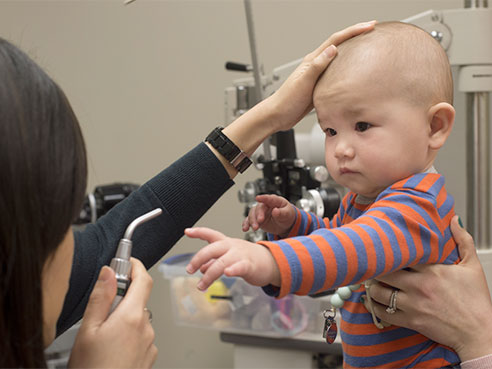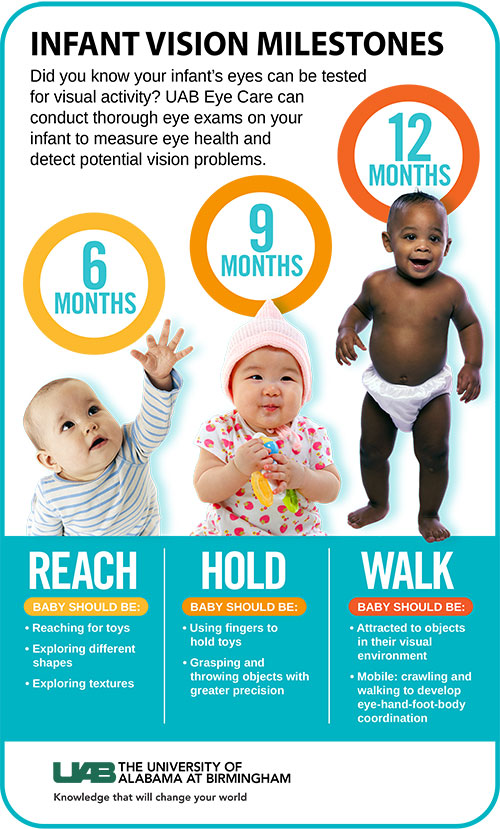
By Jordan Lessley
UAB News

Early detection by examination is the best way to identify current or potential vision problems to assure infants’ eyes are healthy and their vision is properly developing.
The University of Alabama at Birmingham School of Optometry will conduct free eye examinations for infants between 6 and 12 months through InfantSEE®, a public health program in optometry designed to ensure that eye and vision care become an essential part of infant wellness to improve a child’s quality of life.
UAB Eye Care Pediatric Optometry Services is now accepting patients for this event. The event will take place at UAB Eye Care, 1716 University Blvd., in the Pediatric Optometry Clinic on Monday, April 10, from 8 a.m.-5 p.m. Examinations are free, and insurance coverage is not necessary. Appointments can be scheduled by calling 205-934-3058.
The program was developed in 2005 by the American Optometric Association and Johnson & Johnson Vision Care, Inc. Nationwide, the InfantSEE® program has been responsible for discovering retinal cancers and other vision-threatening disorders in infants.
Tamara Oechslin, O.D., Ph.D., assistant professor in the Department of Optometry and Vision Science, Becky Luu, O.D., resident in Pediatric Optometry, and Katherine Weise, O.D., MBA, director of UAB Eye Care Pediatric Optometry Services, will work with fourth-year optometry clinicians to conduct eye exams on infants.
Oechslin says the dilated eye examinations will consist of assessing visual function, eye alignment, the need for glasses and eye health, as well as aiming to obtain early recognition of problems with any of these that could lead to vision loss or other problems.
Eye exams offered through the InfantSEE® program are performed by optometrists across the United States throughout the year, and may supplement the vision screenings performed by pediatricians. It is possible that a need for further services from an eye surgeon, neurologist or pediatrician may be identified by the pediatric optometrists at UAB. If so, UAB doctors will team up to determine ways to maximize the infant’s development long after the InfantSEE® evaluation is completed.

“UAB Eye Care Pediatric Optometry Services has the expertise and equipment to conduct very thorough eye examinations on infants, which is a task not many people are aware can be done,” Oechslin said. “Studies indicate that so much of the vision is developing between birth and 6 months of age. While most babies will have perfect eyes, 6 to 12 months of age is a good time to make sure vision development is on the right track.”
She says it is important for parents to watch their infant’s eye development and detect these issues as early as possible. “Certain vision problems can lead to delays in motor development, such as reaching and grasping for objects or beginning to explore their environment,” Oechslin said.
Oechslin recommends parents take notice of their child’s eye movements and consider their infant’s vision if they are not meeting typical developmental milestones, such as the following:
By 6 months of age, an infant should be able to reach for and follow objects or humans, as well as return a smile.
By 9 months of age, an infant should be able to imitate others using gestures and facial expressions to communicate, grasp small objects with his or her whole hand, and balance well enough to sit upright without support.
By 12 months of age, an infant should be able to pick up objects between his or her finger and thumb and be able to begin to explore by crawling, pulling themselves up on objects to stand with support, and walk around furniture.
The InfantSEE® website is available for more information about the program and children’s eye health.




